Physical Address
304 North Cardinal St.
Dorchester Center, MA 02124
Physical Address
304 North Cardinal St.
Dorchester Center, MA 02124
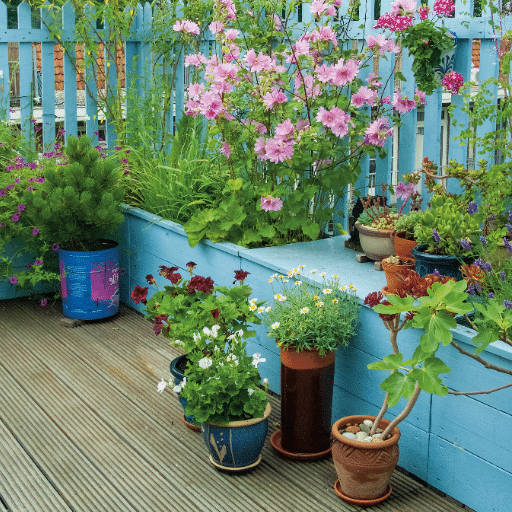
Creating a container garden is not only a practical solution for limited spaces but also a great way of enhancing nature in your house. It doesn’t matter if you have a wide-open balcony or just a little patio, or even if you just have a sunny spot on your windowsill; it’s still going to be a good idea. This flexible gardening technique enables even inexperienced and space-deprived people to have bright flowers, fragrant herbs, or even nutritious vegetables at their fingertips. With the perfect method, your container garden can flourish all year round bringing beauty, nice scents, and even good tastes to your place. In this article, we are going to share our professional recommendations and methods with you when it comes to picking the right containers, choosing the most suitable plants, and keeping a garden that fits any lifestyle and is bursting with life. So, get set to find out how simple and rewarding the process of converting small areas into green and lush havens is!
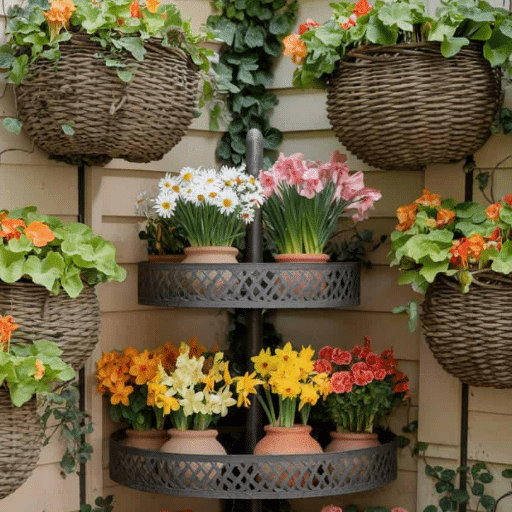
Container gardening presents a wide array of advantages, thus it becomes a perfect choice for any kind of gardener to plant in their own garden no matter how experienced they might be. The biggest benefit is that you will be able to have gardening in limited spaces like a balcony, patio, or windowsill, thus making gardening possible even in cases of the most crowded city areas. Furthermore, the soil quality, drainage, and sunlight exposure can be more easily controlled which leads to healthier plant growth. This type of gardening also cuts down the risks of pests and diseases, which are usually found in soils. The ability to move the plants around or change their location according to seasons with this method, lets you create a garden that is alive all year round and also brings along the challenges of the changing seasons.
Container gardening takes practice and commercial advantages in space by allowing you to grow plants in vertical area, stacking containers, or developing compact designs tailored for such areas as tight spaces. The two factors of careful selection of smaller or dwarf plant varieties and employing creative arrangements, such as hanging baskets and tiered plant stands, will help use the space most efficiently available to them. Thus, one can have even a small place like a balcony or a windowsill turned into a productive, inviting, and beautiful garden without losing the functionality and health of the plants.
Accessibility and mobility of pots guaranteed is one of the most important contributors in forming a practical and user-friendly gardening setup. The pots made of lightweight materials like plastic or fiberglass are the ones that can be easily moved, and also the pots with castors or wheels built-in or the ones with trays on casters are the ones that have more mobility. For accessibility, placing pots on elevated stands or tables minimizes the need for bending or reaching, making gardening more manageable for individuals with physical limitations. Besides, pots with parallel watering and sunlight needs being grouped together simplifies maintenance and boosts the efficiency of the task. By making the mobility and accessibility of containers their top priority, the gardeners can have a flexible and adjustable growing environment that varies according to the different needs.
Container gardening gives an amazing flexibility in picking plants, so the gardeners do not have to be limited by the size of the area. It is hard to imagine that only the most beautiful flowers and ornamental plants or even the most fragrant herbs, vegetables and fruits can exist container-wise as long as the right conditions are present. The size of the container is to be taken into consideration along with the specific water, sunlight, and soil requirements of the plant. Moreover, in an easy and quick way, containers can be rearranged so that throughout the season the best growing conditions are offered. Thus, it becomes easy to test different plants and layouts. This gift of flexibility to the gardeners means that they will be able to grow a variety and rewarding array of plants that are not only personal takes but also seasonal needs.
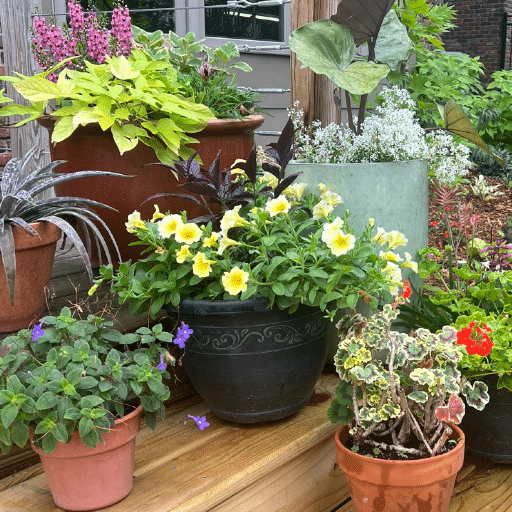
Clay Pots
Classic clay pots are excellent options for plants owing to their great breathability, which in turn helps prevent overwatering. They are the best choice for the plants that like to grow in well-drained soil.
Plastic Pots
Plastic pots are lightweight and the most economical. They are also good moisture holders; thus plastic pots are good for the plants requiring the moisture to be constantly supplied. They are also available in many colors and sizes.
Wooden Planters
Wooden planters are nice to look at and keep the roots warm. Use cedar, which is naturally rot-resistant, or line the wood with plastic to stop the wood from decaying.
Metal Containers
Metal containers are the toughest of the lot and will also give a contemporary look. But you have to make sure that they are lined or treated so that they do not get too hot or rusty.
Fabric Grow Bags
Fabric grow bags are very cord-like, light in weight, and superb with respect to the air circulation around roots. They are best for vegetables and herbs.
Concrete or Stone Containers
Last but not least, these are very strong and their insulation properties are also great. Their heaviness is a reason why these types of containers are suitable only for permanent installations in the garden.
When it comes to containers, give first priority to size and drainage that meet the particular plants’ requirements, which you intend to grow.
The matching of the container to the size and growth requirements of the plant is essential when selecting the right container size. Shallow pots would be good for small plants like herbs or succulents, while tomatoes or shrubs need deeper and wider pots to have enough space for their roots. Always make sure the container has enough soil and roots volume so that the plants can grow healthy. Moreover, you should take into account the plant’s full size and not crowd many plants in one pot unless they have the same requirements in terms of growth. Proper drainage is also very important to avoid waterlogging no matter what size the container is.
Before you begin vegetable container gardening, you will have to get a few important materials which are mainly the key to success. First of all, you should get the best possible containers with drainage holes that are of good size to avoid water being stagnant. The next step is to select a potting mix that is rich in nutrients and has good drainage; pick one that is made particularly for containers because regular garden soil may not be perfect in terms of texture or nutrients. Also fertilizers for vegetables will be needed to support the plant’s healthy growth for the entire season. Furthermore, make sure you have a water source that is reliable as the plants in the containers will need watering consistently. Other materials that can be of help include stakes or trellis for holding up the climbing or tall plants, mulch for moisture retention, and plant labels for marking the different varieties.
In the case of flower containers, creative options are countless. The garden can be made more charming and attractive with old wooden crates, vintage teapots, galvanized buckets, and even repurposed boots. Hanging baskets and wall-mounted planters are perfect for small spaces and upcycled items like painted tin cans or broken pottery can become truly unique and decorative pieces. Proper drainage is a must while choosing the containers and the addition of a layer of gravel at the very bottom can help in m preventing waterlogging. Engaging your creativity can lead to the making of wonderful and eco-friendly container gardens that will speak volumes of your personal taste.
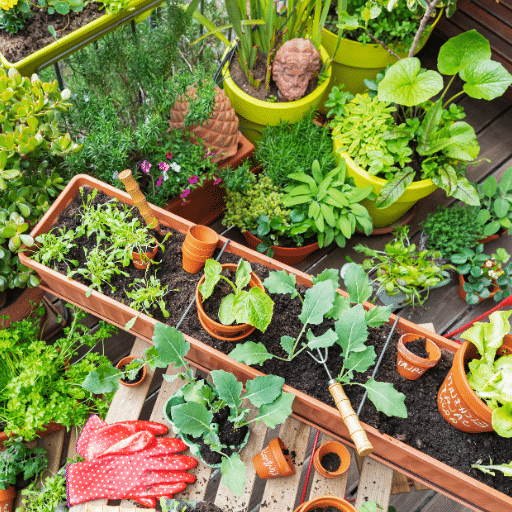
Pick the Right Containers: You must select proper containers with good drainage to avoid the waterlogging condition. Depending on the temperature, use pots made from tough materials like terracotta, ceramic, or plastic.
Using Quality Soil: Buy a luxurious potting mix that is specifically meant for container gardening because it not only preserves moisture but also generates the necessary nutrients for your flowers.
Watering Regularly: The soil in the containers usually dries up more quickly than in the garden beds; hence, do the soil moisture check frequently and water your plants when necessary.
Choose the Right Plants: Select the plants that match the local climate, besides the size of the container. Also, think about light and space requirements when mixing plants.
Fertilize Often: Either a balanced fertilizer or a slow-release one can supply nutrients for a long time, since the nutrients in the potting soil for the potted plants get exhausted faster.
Strategically Position: Put your containers in the areas that will receive sunlight or shade according to the plants’ needs.
The good soil for cucumbers must be rich, well-draining, and capable of retaining water. If planting is done in a place where cucumbers get the full sun of at least six hours a day, the fruits will be sweeter and not bitter. By providing a trellis or other means of support, cucumbers can be grown vertically, which saves space and also increases air circulation to the plant and thus the chances of disease. Besides, pests like aphids or cucumber beetles should be controlled by quick action through the use of natural or organic pest-control methods. Also, the regular harvesting of cucumbers should be done at the desired size to promote further production.
Container plants have the same watering needs as other plants but even more so, since their soil gets dried out quicker than that of garden beds. It is important to check the soil moisture regularly by feeling the top inch of soil; if it feels dry, then it’s time to water. It is best to use a watering can or hose with a gentle spray to avoid displacing soil, and you must water thoroughly until it begins to drain from the bottom of the container to make sure that water reaches the roots. Do not overwater as this can result in root rot; rather, allow the soil to dry out a little before the next watering. Moreover, the size of the container, weather, and plant type should be taken into consideration when adjusting the watering schedule.
Pest problems in container gardens are common but the good thing is that they can be managed with proper care techniques. You can start by regularly checking your plants for pests like discolored leaves, holes, or insects that are easily seen. If you find any insects, you can either remove them with your hands or use a gentle stream of water. If the infestations continue, then you may have to resort to the use of natural solutions like insecticidal soap or neem oil, which are harmless both to the plant and to beneficial insects. Make sure to practice good hygiene for your container garden by keeping it free from debris and dead leaves, as these can also be lures for pests. And lastly, always make sure that your plants are healthy by giving them the right amount of light, water, and nutrients, because strong plants will be less vulnerable to pest attacks.
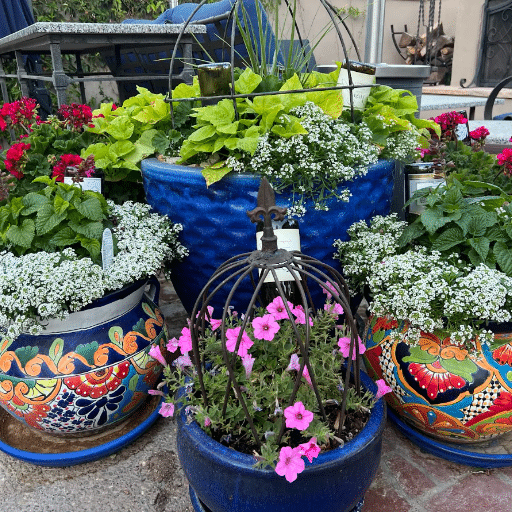
When selecting to cut flowers from a container garden, first and foremost it is important to use clean and well-sharpened scissors or pruners to at least not harm the other plants. The best time to cut the stems is early in the morning when their water content is at its peak, and the cuts should be made just above a leaf or bud thereby encouraging growth. The cut flowers should be dipped in the water very quickly in order to keep them fresh. In fact, cutting the flowers regularly can actually increase the number of blooms, as well as the overall health and vibrancy of the plants.
Some of the best flower varieties for cutting are zinnias, snapdragons, and sunflowers that come with long-lasting blooms and beautiful colors. Roses, lilies, and dahlias also fall under excellent flower categories because of their gracefulness and diversity in shapes and sizes. Besides, flowers such as cosmos and bachelor’s buttons are no-fuss growers that still manage to be a constant source of blooms for the whole season, which makes them the best pick for flower arrangements. If you wish to have fresh flowers for cutting all the time, then go for those that are both tough and continuously blooming varieties. To the flower arrangements, for added texture and interest, foliage like eucalyptus or greenery can be used as they go well with the flowers.
Properly harvesting flowers means doing it during the coolest hours of the day such as early morning or late evening, hence preserving their freshness. Clean, sharp scissors or pruning shears should be used to make a cut at a slight angle, which allows for better water absorption through the stem. It is best to choose flowers that are just about to bloom because they will last longer in the arrangements. To keep the stems from wilting, place them in a bucket of clean, cool water immediately after cutting. In addition, removing leaves that are going to be submerged underwater will not only help to keep the water clean but will also prolong the life of your flowers.
Potted bloom health starts with the selection of a potting mix that is high in quality and can provide adequate drainage and nutrients. Water should be poured only in a pot with drainage holes so that water cannot accumulate at the bottom and cause damage to the roots. Consistent watering of the flowers must be done to ensure that the soil is moist but not very wet. The pot should be placed in the right spot with the right amount of light, depending on the needs of the plant as some need full sunlight while others prefer partial shade. Regularly cutting off dead or faded flowers helps in stimulating new growth, and using a balanced liquid fertilizer every few weeks can be a good practice to ensure the flowers are healthy and vibrant. Lastly, watch out for pests and take quick action in case of any intrusion so that your blooms are safe.
The best containers for container gardening can be your choice of glazed or unglazed pots, large or small, depending on what you want. If you want to choose the pots, unglazed ones let the air in, though glazed ones keep the dirt wet. A container of 5 gallons is highly recommended for planting tomatoes or squash as it provides a good size for the roots to grow healthy. Water the soil through the holes in the bottom of the container to avoid conditions that promote bad soil, hence, the presence of water in the container should be no more than the plants can use. In the end, the kind of container you pick must be able to hold the plants’ growth and fit in the space you have for it.
Container plants should always be kept moist to a certain extent; therefore, it is important to check and make sure how the soil conditions are on a regular basis. A simple method is to insert your finger into the soil about one inch deep; if it is dry, then it is time to give water to your container. The best time to water your container is in the morning so that the plants can absorb the moisture before the heat of the sun and wind can cause evaporation. The large container might need watering less frequently compared to the small one, so change your watering schedule accordingly. Don’t forget that during summertime, flowerpots’ water intake goes up, especially if they are maturing.
The use of high-quality potting soil or soilless mixtures is an absolute must for successful container gardening. The aforementioned soils are excellent for moisture retention while at the same time providing plants with enough nutrients. There is also the option of adding a filler like perlite or vermiculite to enhance aeration and drainage. Use enough soil depth to accommodate roots of the plant; for the big pots, 12 inches of soil would be good as a minimum. Always checking the soil to keep the roots healthy and adapt to the plants’ needs.
Absolutely, veggies can be grown in smaller containers just that you have to be careful with the selection of plants. Lettuce and herbs are some of the least demanding edible plants, while tomatoes or cucumbers are among the most demanding ones, usually in terms of space so they would require a larger container. More rooting ground means more soil depth so make the containers deep enough to hold soil and roots. Be prepared to water more frequently as plant in small pots dry out quickly, thus keep an eye on soil moisture. Many plants will live even in small places if given the right care.
Container gardening has many pros, such as flexibility and less effort in caring for plants. There are different places where the containers can be put, so it is possible to change their position according to the needs of the plants for either sun or shade. Soil quality can also be controlled through this method, which will therefore help you to stay away from the poor soil conditions that are there in ground gardens. Besides, container gardening can also keep some pests away as the plants are raised above ground. This method of gardening is ideal for those who have small space or for those who want to enjoy the beauty of gardens without much work.